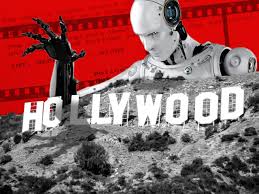The Dark Side of ChatGPT: What No One Is Telling YouIn a world increasingly powered by artificial intelligence, few technologies have captured the public’s imagination quite like ChatGPT. Hailed as a revolutionary leap in communication, education, and business productivity, OpenAI’s powerful chatbot has become a ubiquitous tool for millions around the globe. From writing essays and generating code to composing poetry and simulating conversation, ChatGPT seems to do it all. But beneath the sheen of innovation lies a murkier reality—one that raises ethical, social, and psychological concerns that often go unspoken.
This is the story no one is telling you—the dark side of ChatGPT.
Chapter 1: The Illusion of Intelligence
At its core, ChatGPT is not a thinking machine. It doesn’t reason, understand, or possess consciousness. It is, fundamentally, a glorified autocomplete on steroids—a large language model trained on massive datasets of human-generated text. It predicts the next most probable word in a sequence based on statistical patterns.
This might sound harmless, but here’s where things get troubling.
Users are often tricked into believing ChatGPT “understands” them. It mimics human language so convincingly that many people forget it lacks genuine comprehension. This illusion of intelligence leads users to place unwarranted trust in its outputs, sometimes with serious consequences. From legal professionals using it for case research to students submitting its work as their own, the assumption that ChatGPT “knows” something is not just flawed—it’s dangerous.
Chapter 2: Misinformation at Scale
ChatGPT is prone to something called hallucination—the confident generation of false or misleading information. Unlike a human who might admit, “I don’t know,” ChatGPT can fabricate names, statistics, events, and sources with uncanny fluency. And unless the user has prior knowledge or double-checks the information, the errors can go unnoticed.
In one notable case, a lawyer submitted a legal brief filled with fake court citations generated by ChatGPT. The model confidently produced cases that didn’t exist, complete with realistic-sounding names and docket numbers. The result? A reprimand by the court and widespread embarrassment.
The broader implication is chilling: What happens when misinformation becomes indistinguishable from truth?
Chapter 3: The Privacy Mirage
Many users assume that interactions with ChatGPT are private. They’re not. Every query you type, every conversation you have—unless you’re using specific privacy settings—is stored, analyzed, and potentially used to train future models.
Despite OpenAI’s claims about data safety, breaches have already occurred. In March 2023, a bug exposed parts of users’ conversation histories to other users. In a world where people casually use ChatGPT to write personal emails, legal documents, or even journal entries, the stakes for data privacy are sky-high.
But the real issue is user complacency. Many blindly share sensitive information without fully understanding how it might be used—or misused.
Chapter 4: The Automation Trap
ChatGPT is a productivity powerhouse. It can summarize documents, write code, create marketing copy, and even pass professional exams. But its efficiency comes at a cost—human jobs.
Writers, editors, coders, translators, paralegals, and customer service agents are already seeing parts of their work outsourced to AI. While proponents argue that ChatGPT simply augments human effort, the economic reality for many professionals is one of devaluation and redundancy.
Even worse, as companies rush to adopt AI for cost savings, they often cut corners on ethical implementation, leading to biased outputs, reduced human oversight, and a workforce left behind in a rapidly changing world.
Chapter 5: The Ethical Abyss
ChatGPT doesn’t have morals. It doesn’t know right from wrong—it only mimics patterns of language found in its training data. That training data includes everything from encyclopedias and literature to Reddit threads and Twitter rants. As a result, ChatGPT can sometimes generate content that’s biased, offensive, or even harmful.
Despite ongoing efforts to fine-tune the model, it can still reinforce stereotypes, produce sexist or racist content, and reflect the darker corners of the internet.
Worse yet, users can jailbreak the system—manipulating it to produce content it’s not supposed to, like detailed instructions on illegal activities or hate speech disguised as satire. The ethical safeguards, while improving, are far from foolproof.
Chapter 6: The Psychological Fallout
There’s a subtler, more insidious effect at play here: the way ChatGPT reshapes our minds.
People are becoming emotionally attached to AI. There are increasing reports of users using ChatGPT for emotional support, venting trauma, or even seeking romantic interaction. On platforms like Reddit, users talk about their “friendship” with ChatGPT—how it “understands” them when no one else does.
But this illusion of companionship masks a disturbing truth: ChatGPT cannot care. It does not feel empathy. It does not reciprocate affection. It is an algorithm simulating warmth, and when users forget that, they risk emotional dependence on a tool designed for utility—not intimacy.
Chapter 7: The Weaponization of AI
ChatGPT isn’t just a toy or tool—it can be a weapon.
It can generate spam at unprecedented scale. Craft phishing emails that are grammatically perfect. Write malware scripts. Fabricate fake news articles that read like real journalism. And while OpenAI has guardrails in place, bad actors are finding ways to bypass them.
Governments, cybercriminals, and propagandists now have access to a machine that can mass-produce persuasive, misleading content faster than any human ever could. The implications for politics, security, and society at large are staggering.
Chapter 8: The Rise of the Echo Chamber
ChatGPT doesn’t “debate” with users. It adapts to their tone, language, and even worldview. This means that if a user comes in with a particular bias, ChatGPT may subtly reinforce it—not out of intent, but design.
This creates a new kind of echo chamber. Unlike social media, where opposing views might occasionally slip through, ChatGPT becomes a mirror—reflecting your beliefs back at you in polished prose.
Over time, this can entrench ideologies, validate conspiracy theories, and give users a false sense of intellectual confirmation—all while appearing neutral and objective.
Chapter 9: The Collapse of Creativity
Paradoxically, a tool meant to spark creativity may end up stifling it.
More students are using ChatGPT to write essays. More bloggers are using it to generate content. More marketers are automating their copy. While this might seem efficient, it risks homogenizing our cultural output.
If everyone starts using the same AI to generate their work, we may enter a new era of “algorithmic sameness,” where originality is sacrificed at the altar of convenience. True creativity—born of struggle, reflection, and human experience—could become rarer, replaced by AI-polished mediocrity.
Chapter 10: What Happens Next?
So where do we go from here?
ChatGPT is not going away. If anything, it will become even more advanced, more convincing, more embedded into our daily lives. It will write more articles, code more apps, simulate more conversations. And with the rise of multimodal models, it will soon generate images, videos, and even full virtual experiences.
The question is no longer “Should we use it?” but “How do we use it wisely?”
We must:
Develop stronger digital literacy. Everyone should understand what ChatGPT is and isn’t.
Push for transparency. Companies like OpenAI must be clear about training data, limitations, and data use.
Create ethical boundaries. Regulations and policies need to catch up to the speed of innovation.
Preserve human value. We must not outsource our humanity to machines—no matter how good they sound.
Final Thoughts
ChatGPT is a marvel of modern technology. But like any powerful tool, it carries risks—some visible, others hidden beneath the surface. It can educate or mislead. Empower or exploit. Connect or isolate.
The dark side of ChatGPT isn’t just about the AI itself—it’s about us. Our dependence. Our expectations. Our willingness to substitute speed for depth, convenience for understanding.
As we move forward into this AI-driven future, the real challenge will be remembering what it means to be human.
Share this story. Talk about it. Because the real danger of ChatGPT isn’t that it’s too powerful—it’s that too few people are asking the right questions about how we use it.







